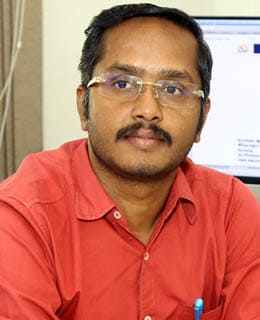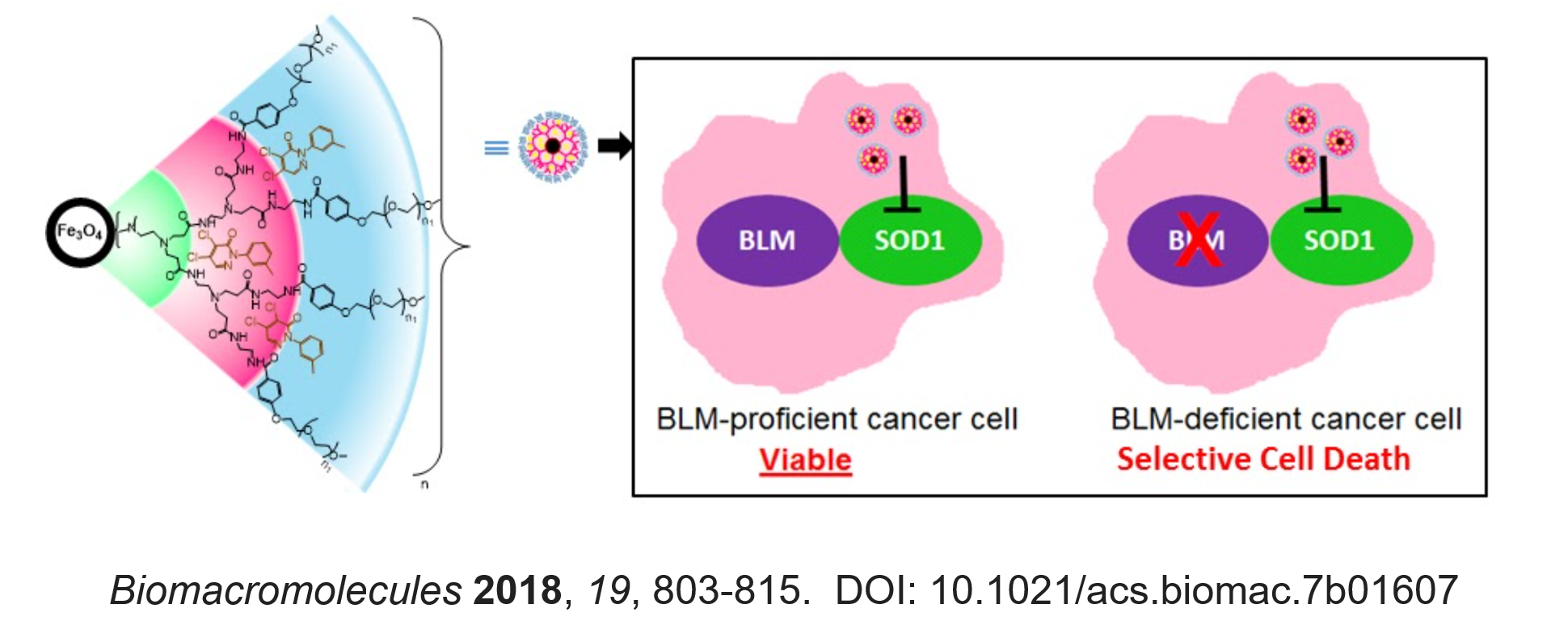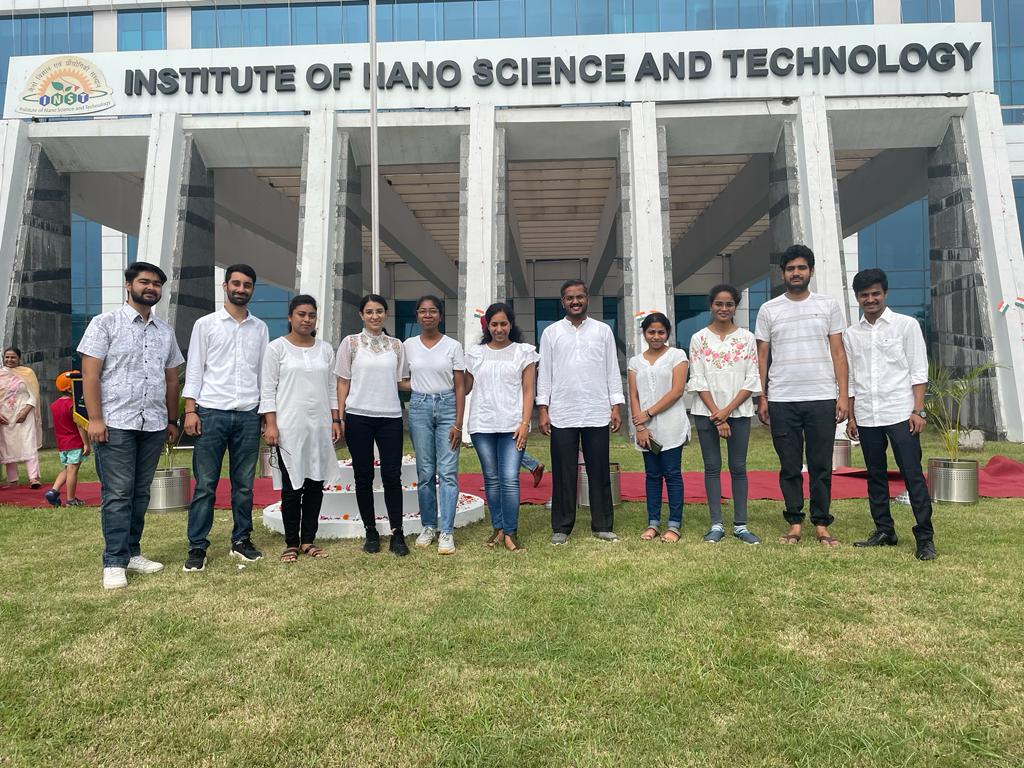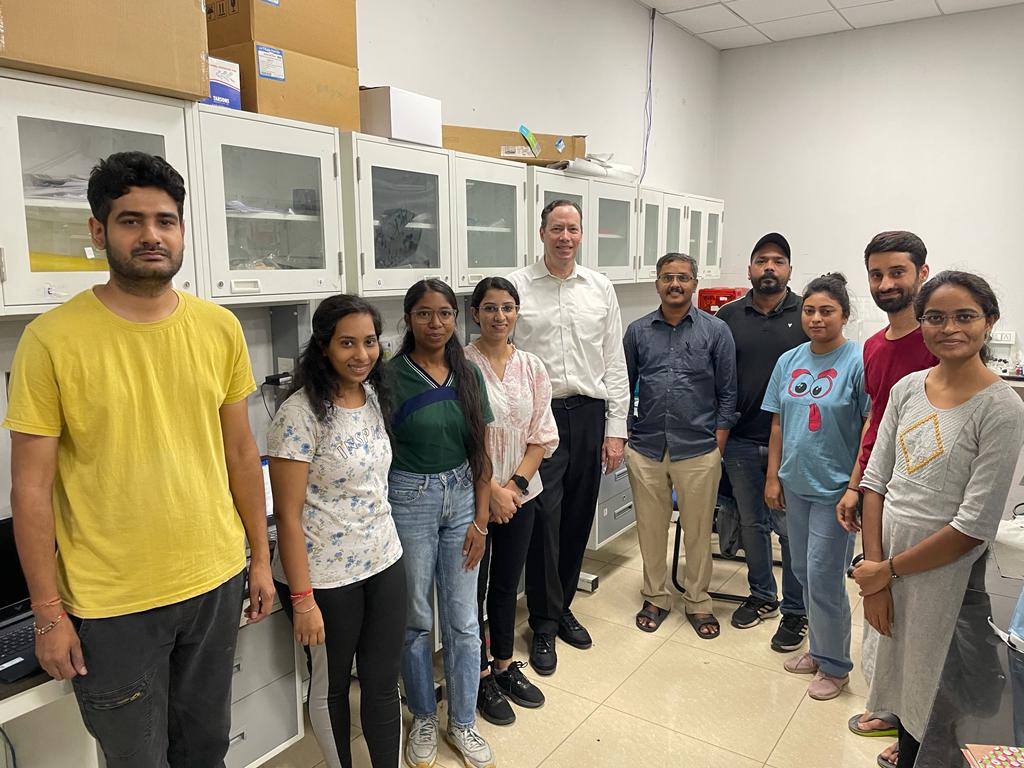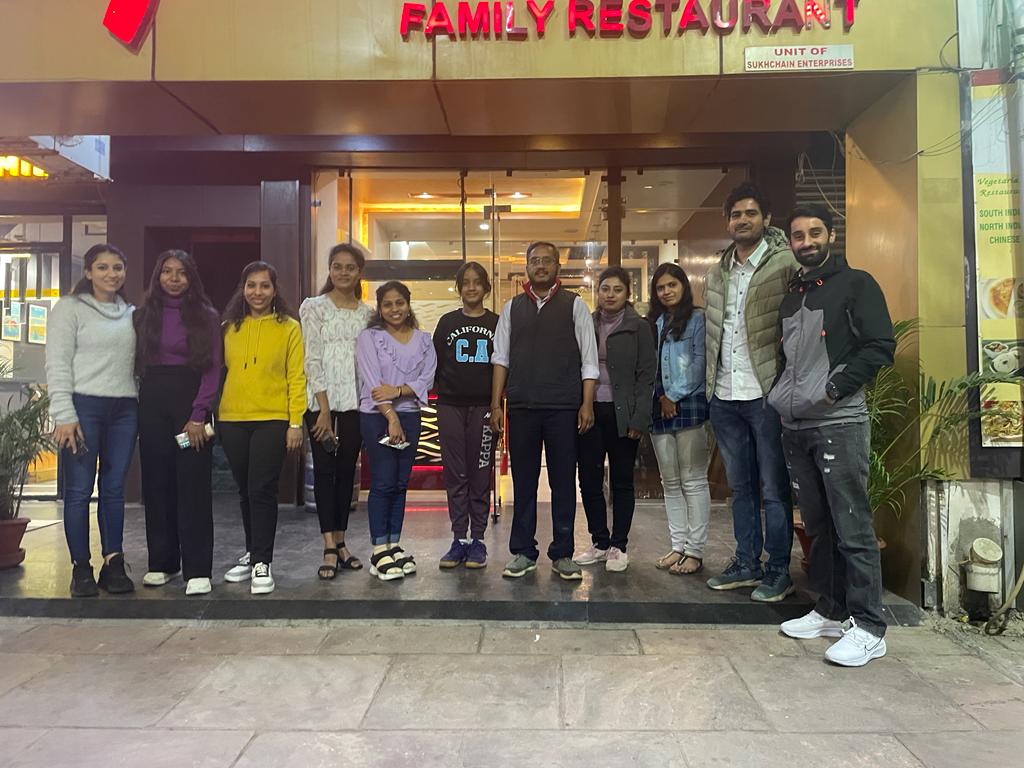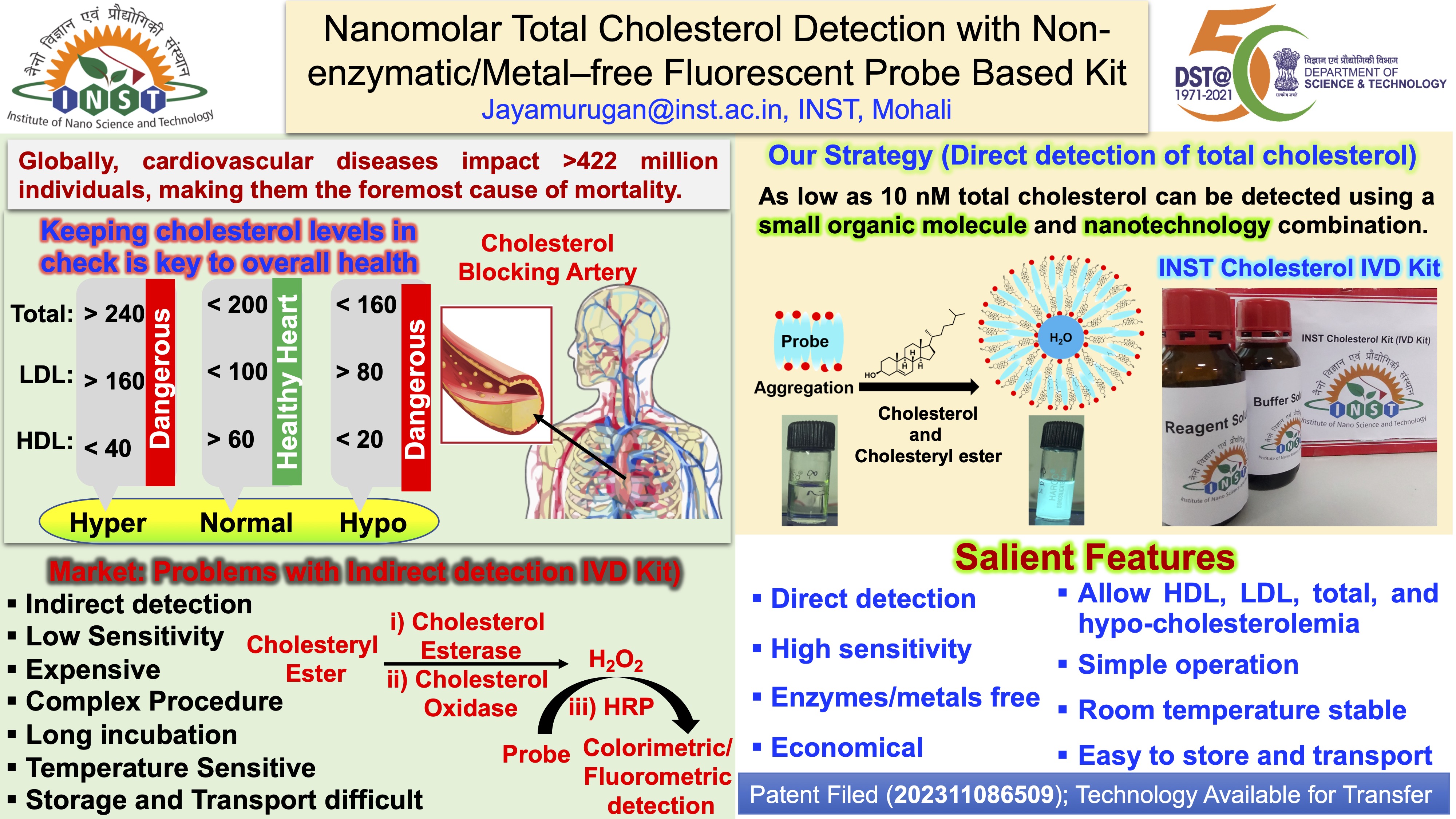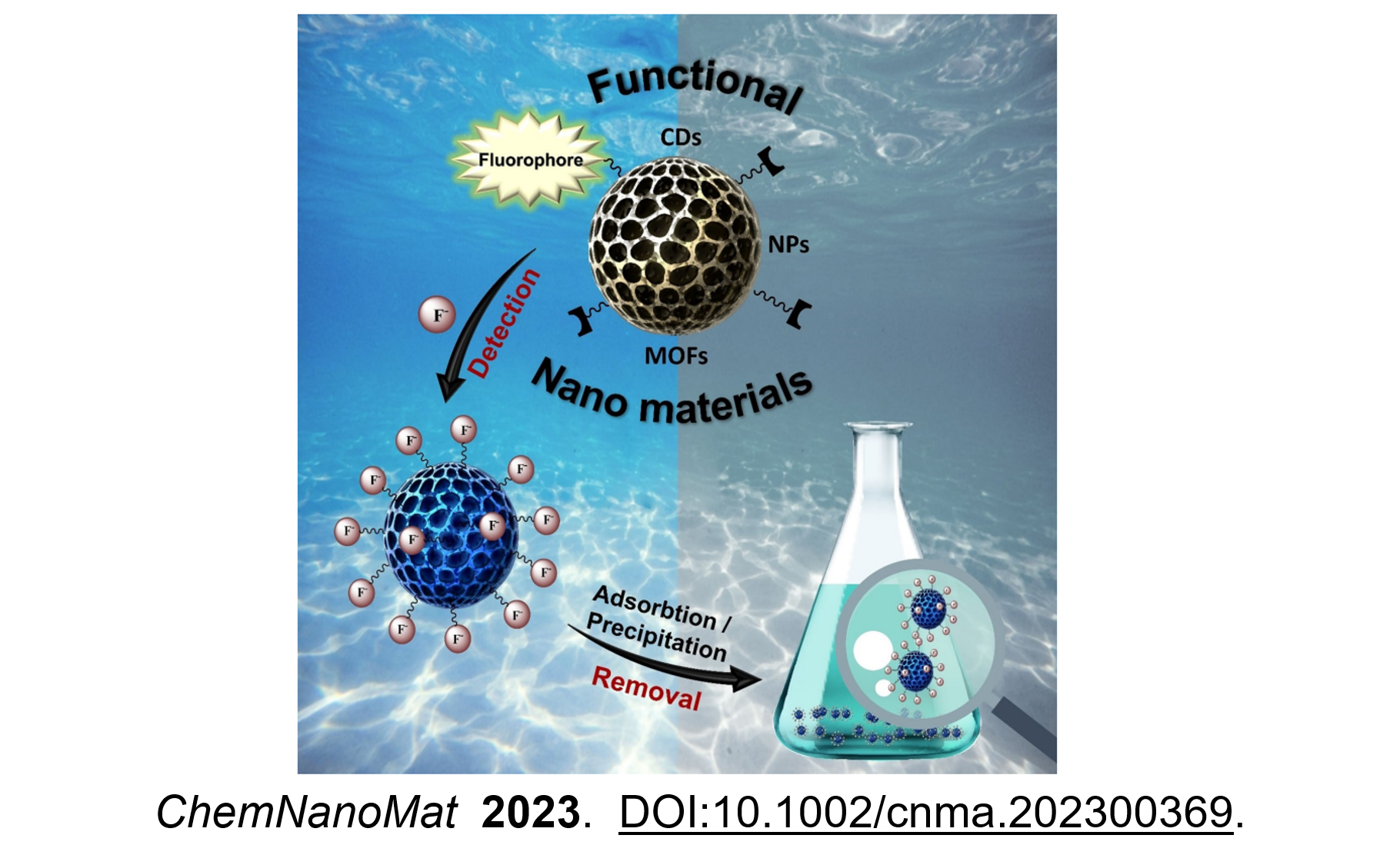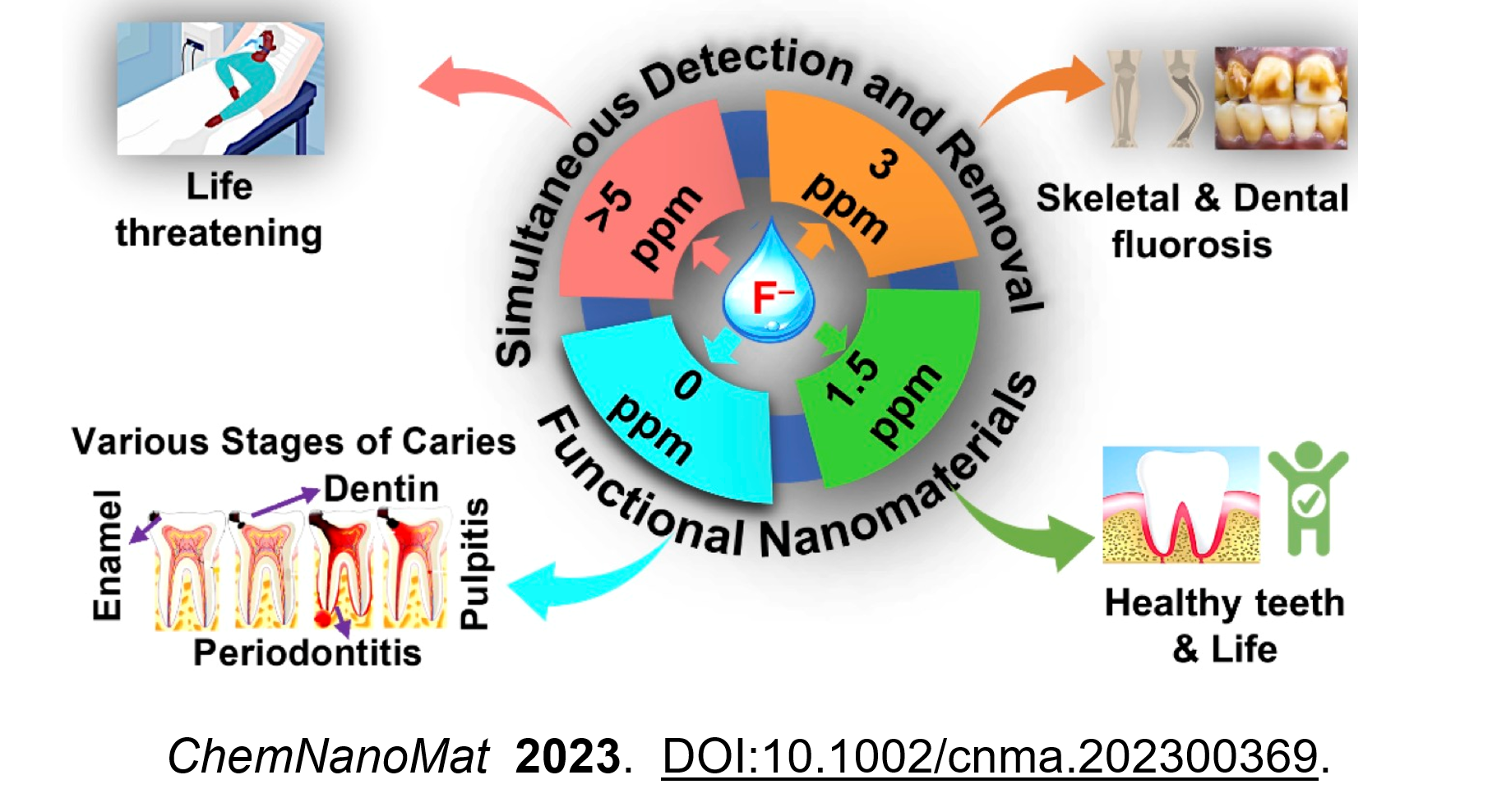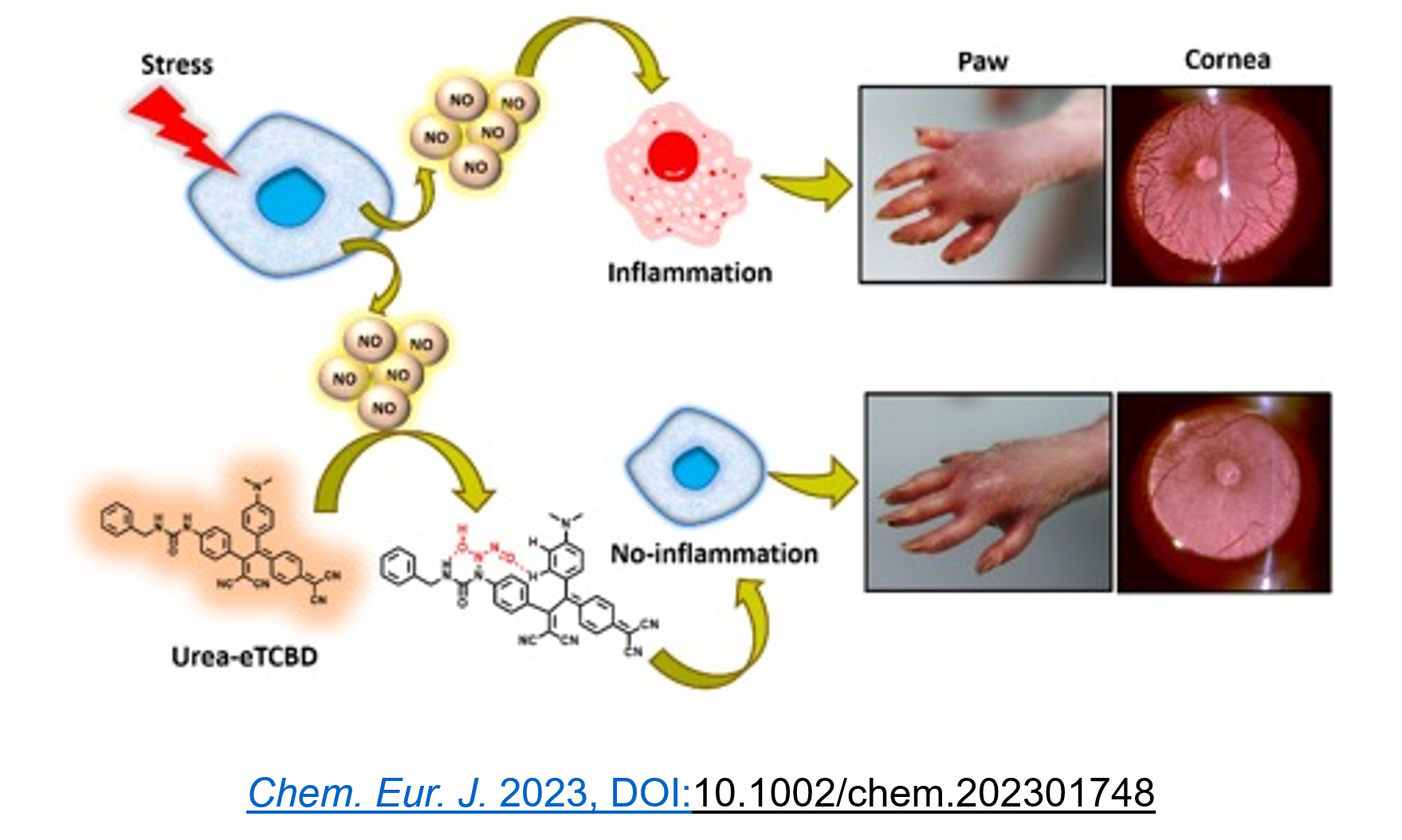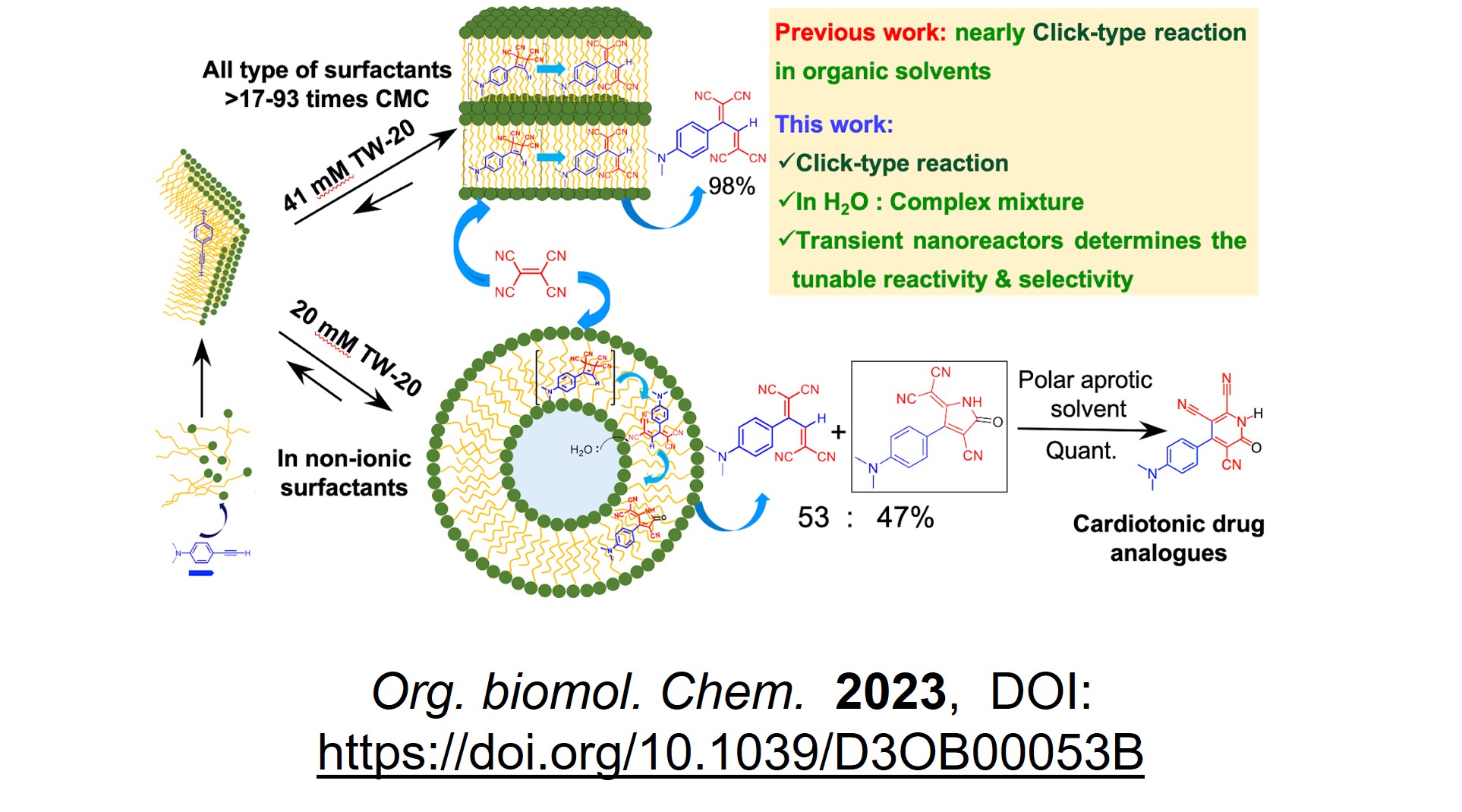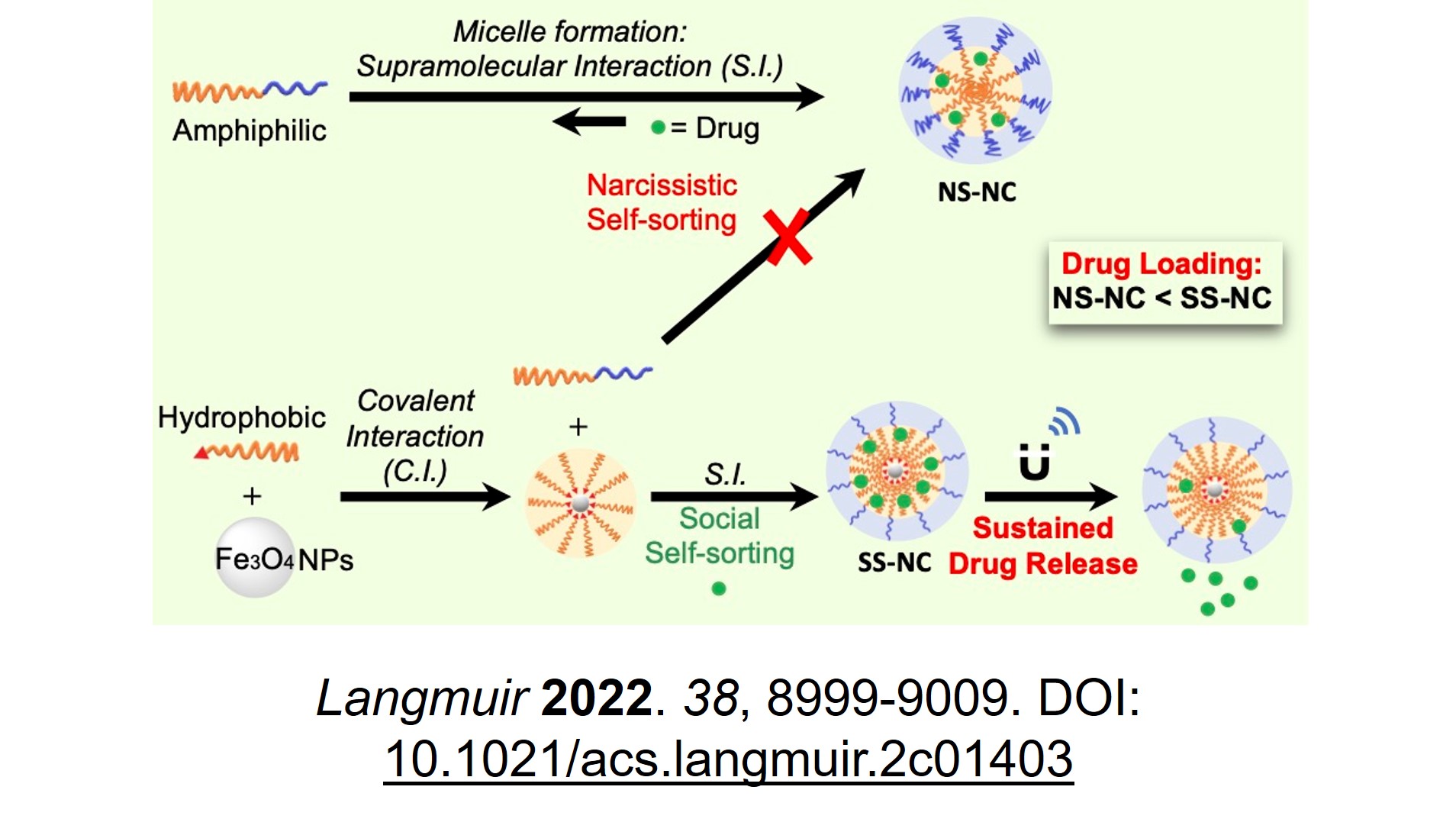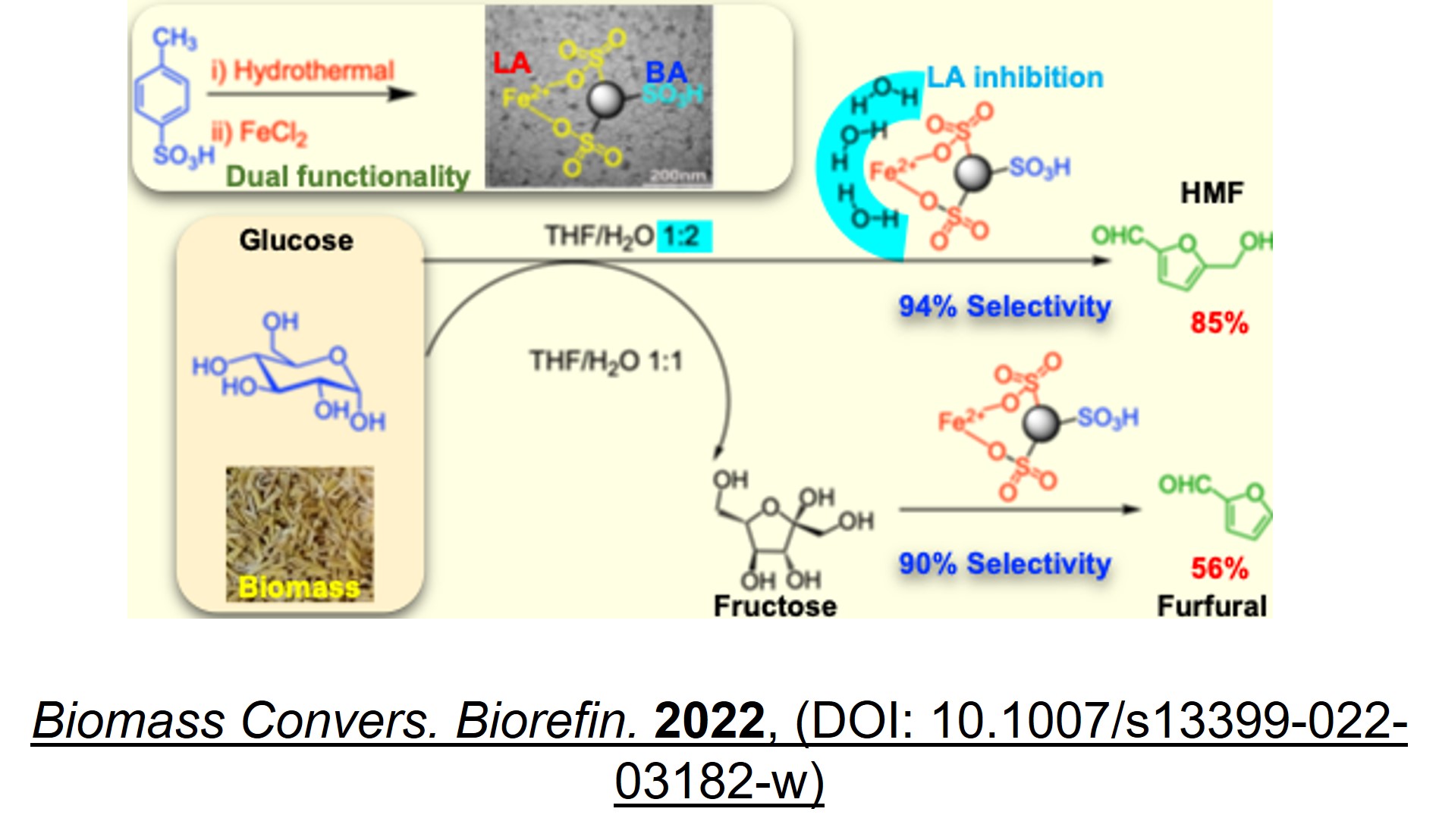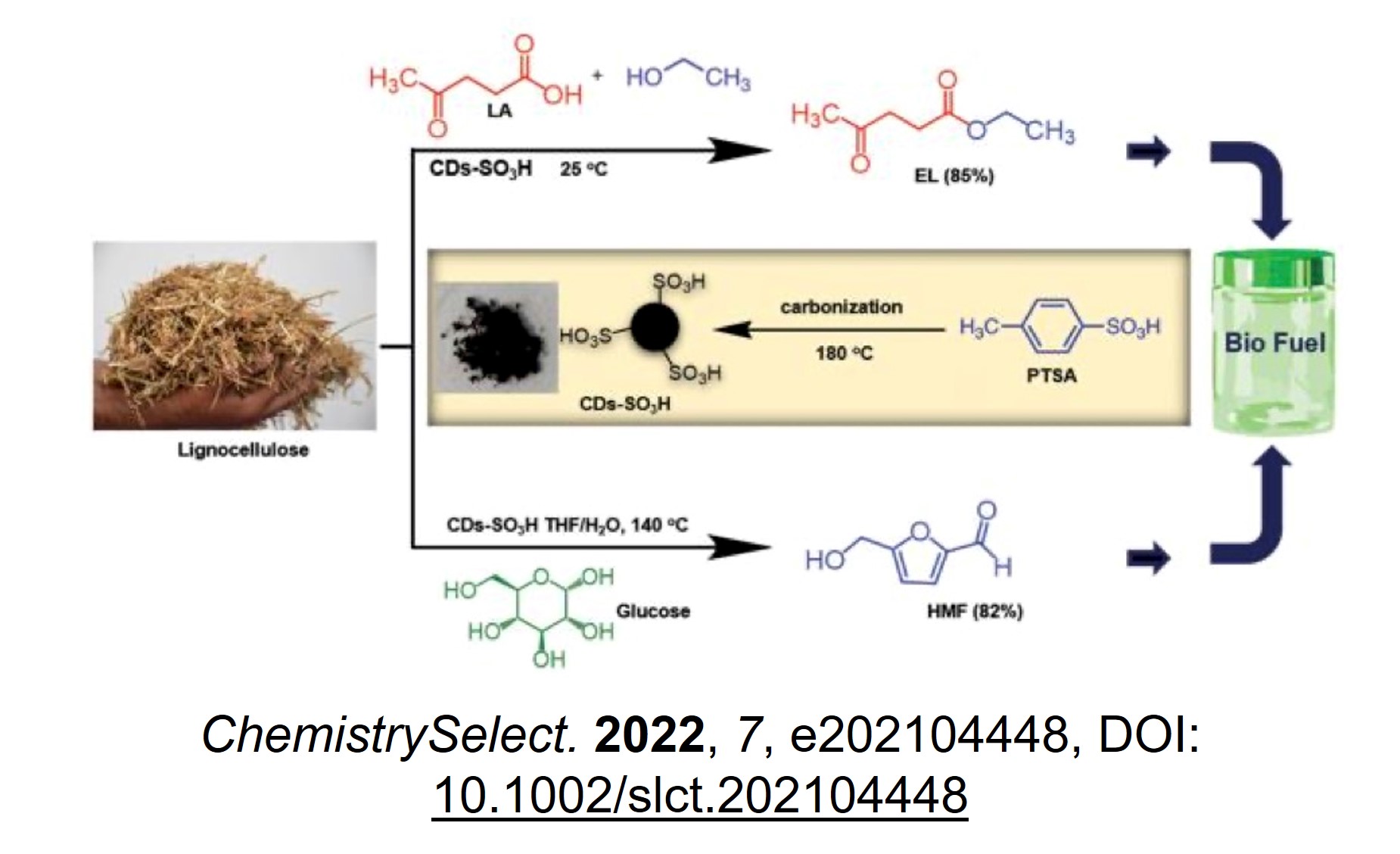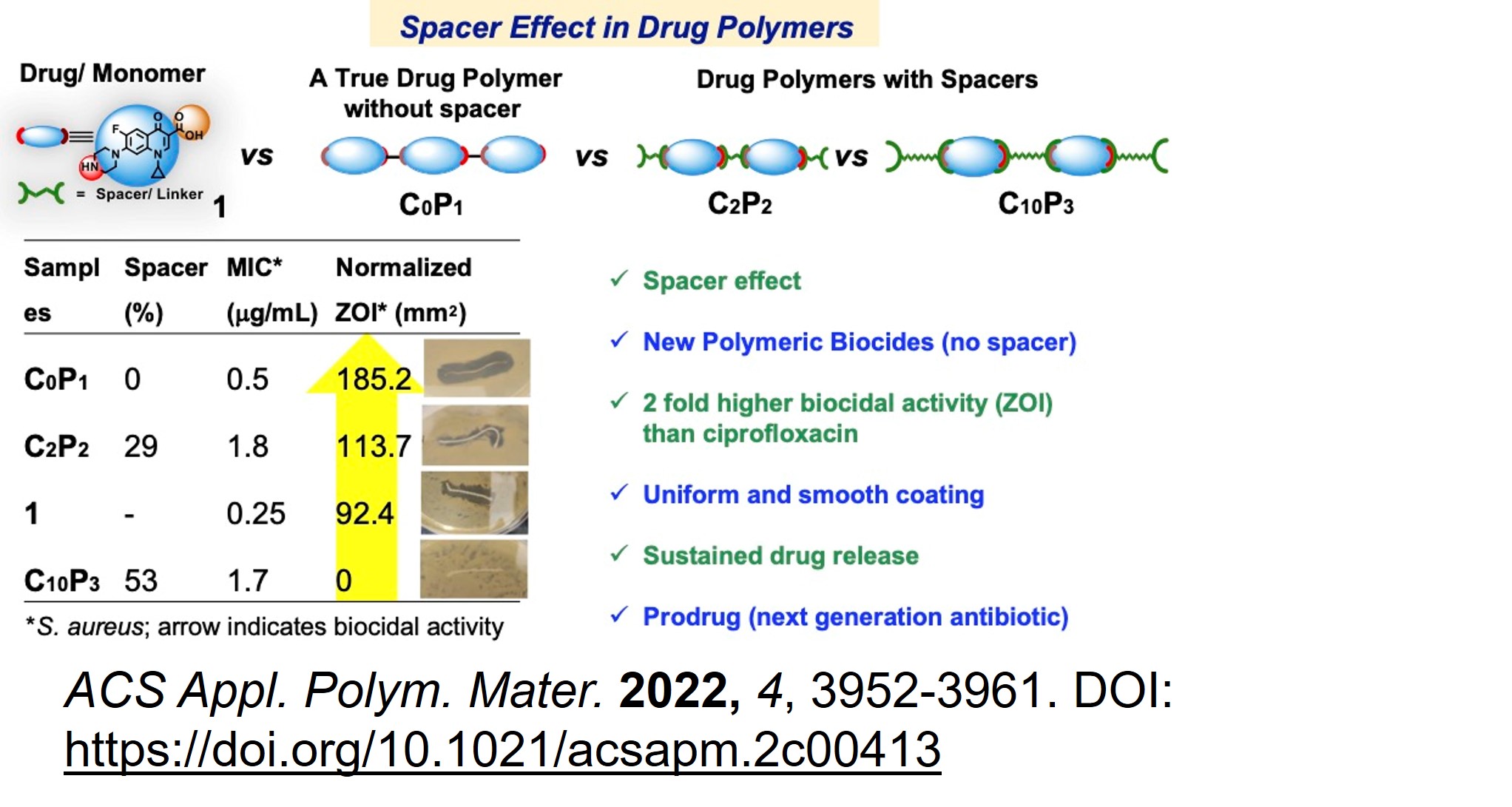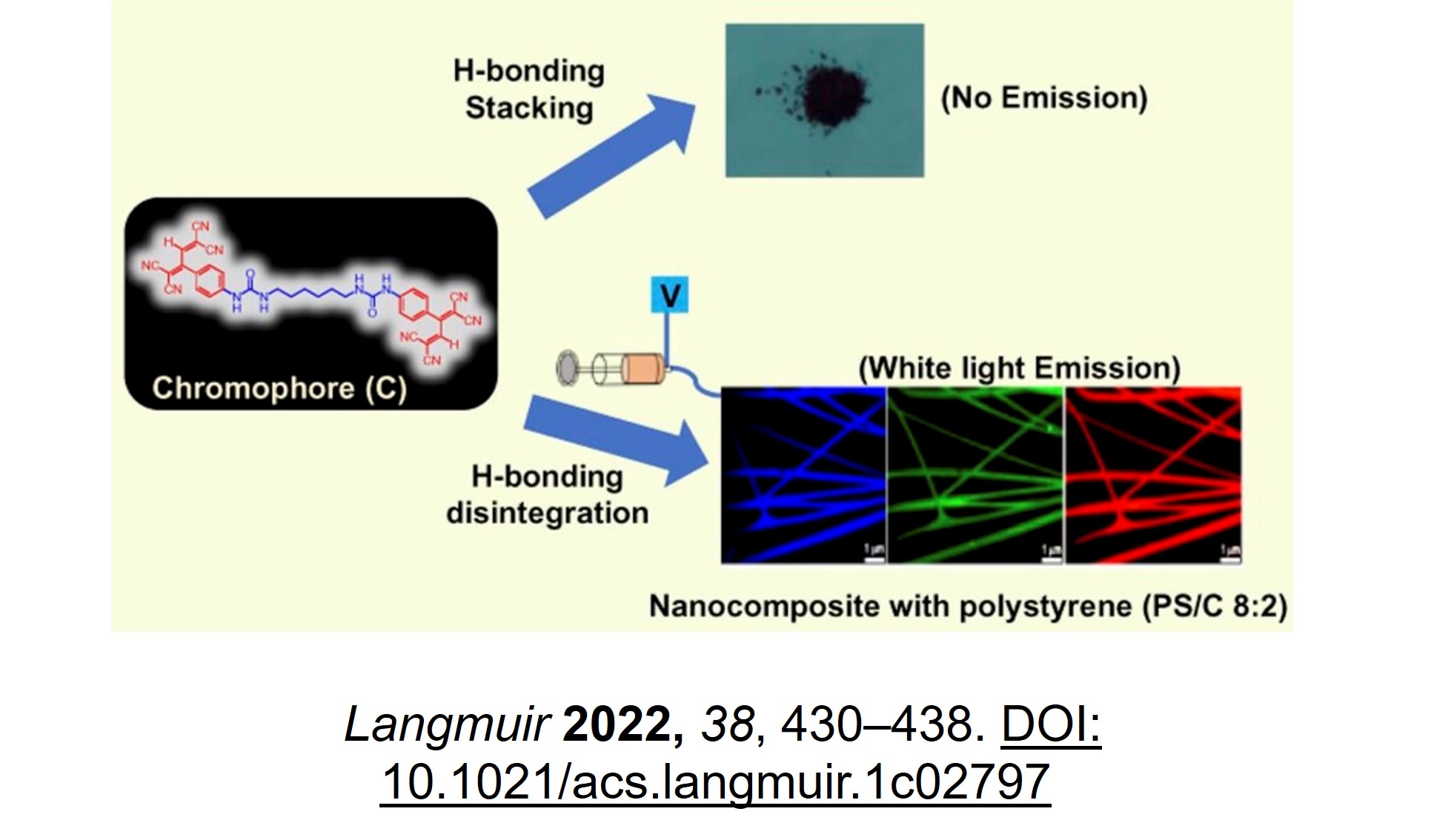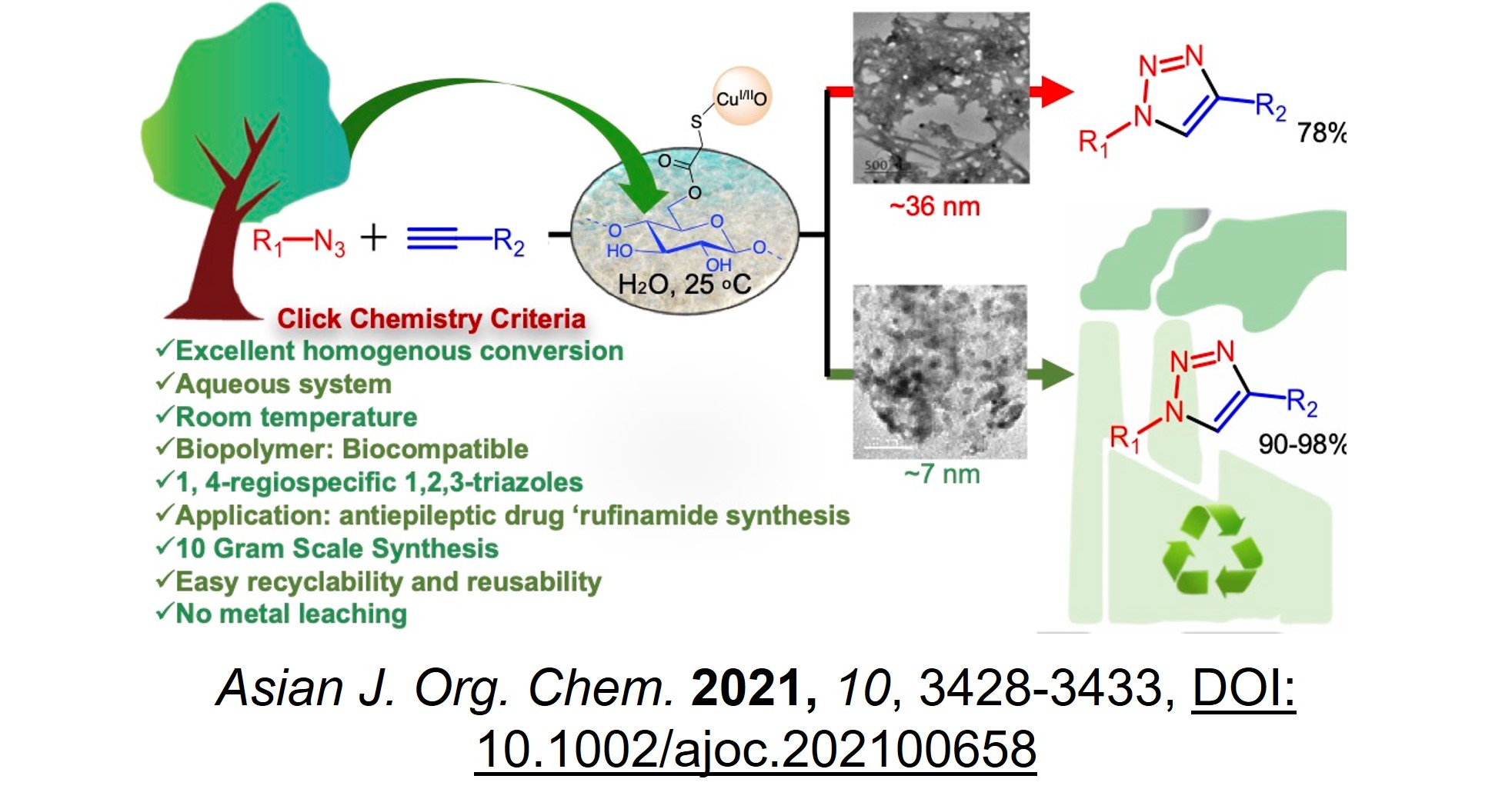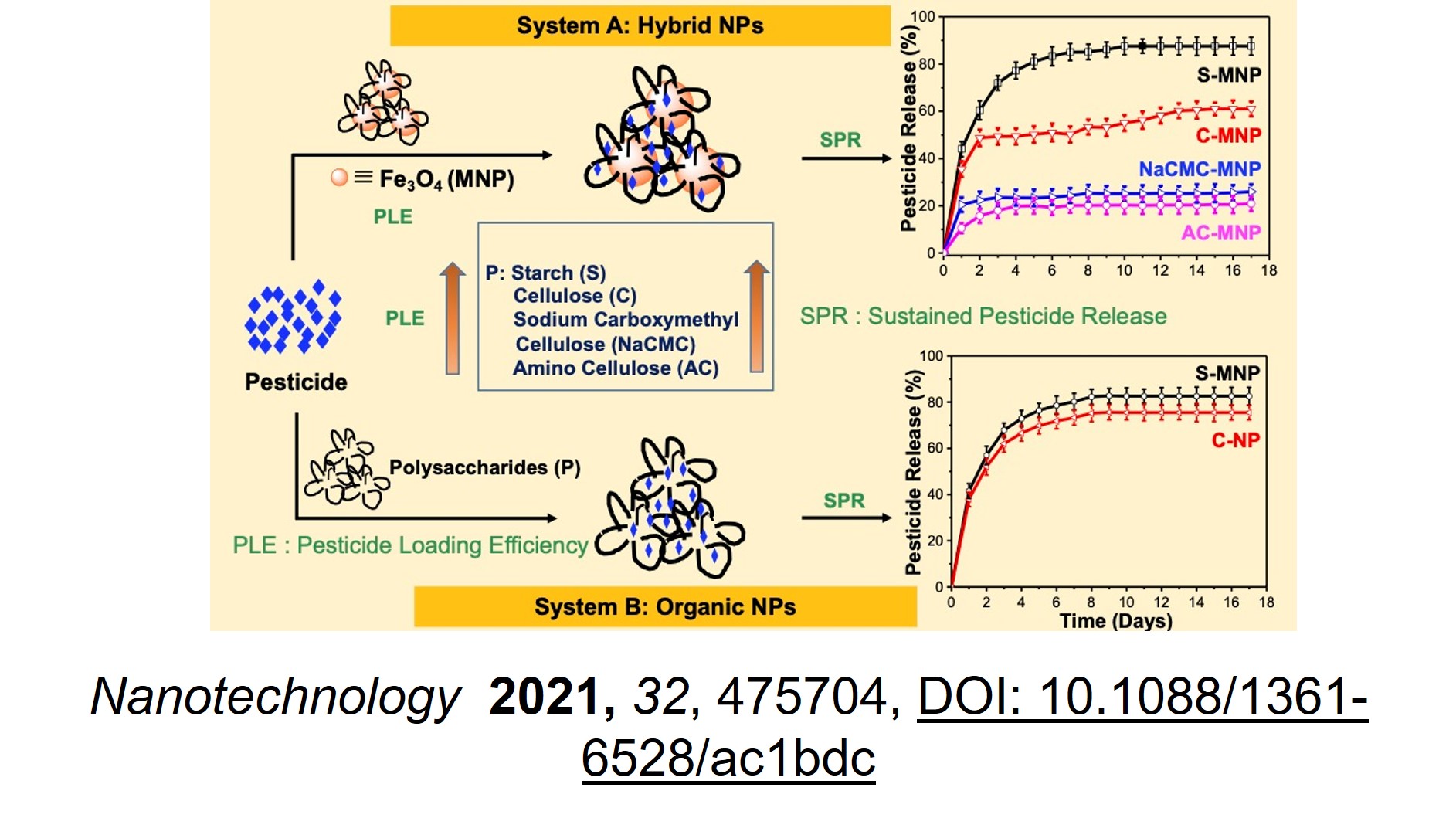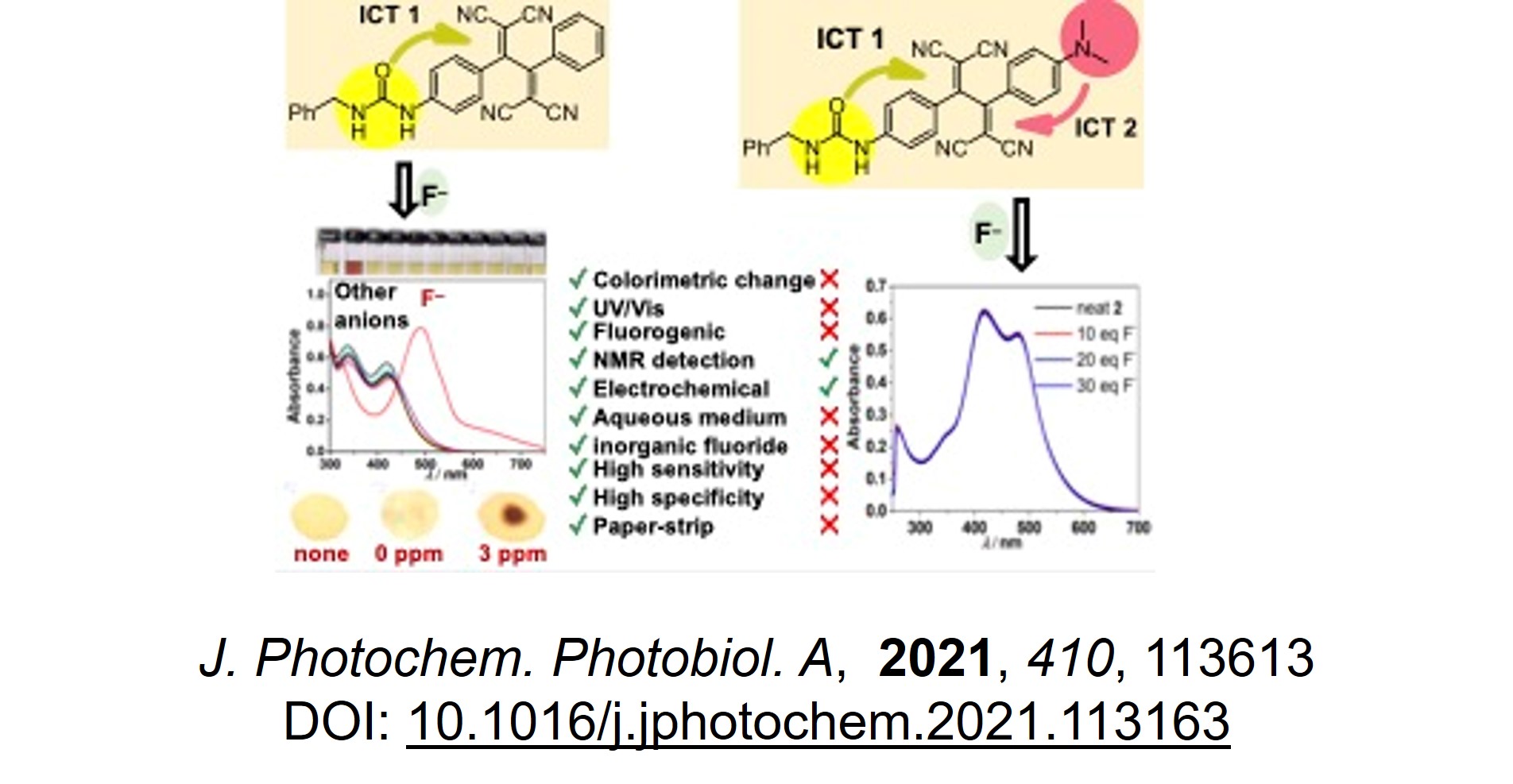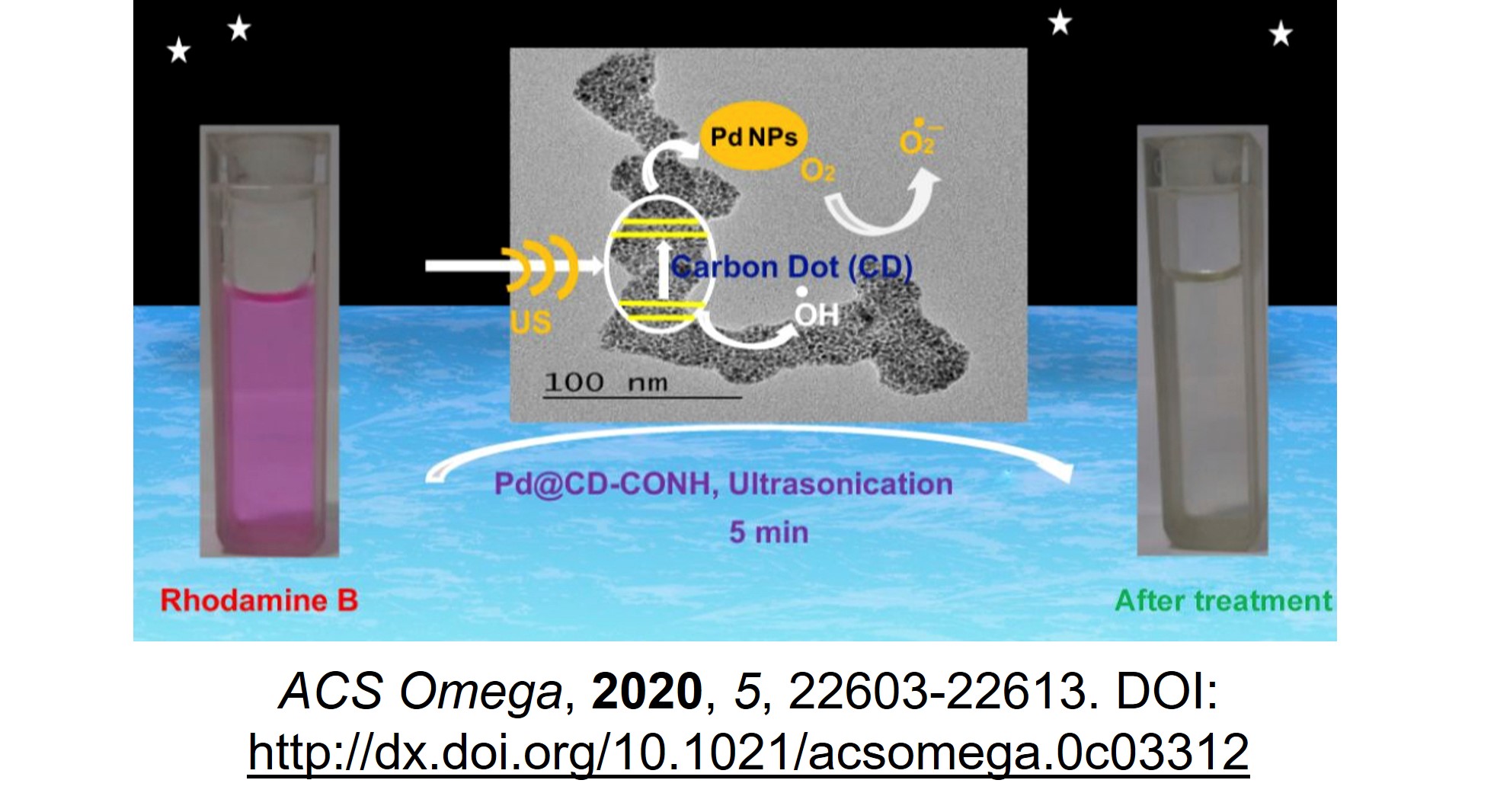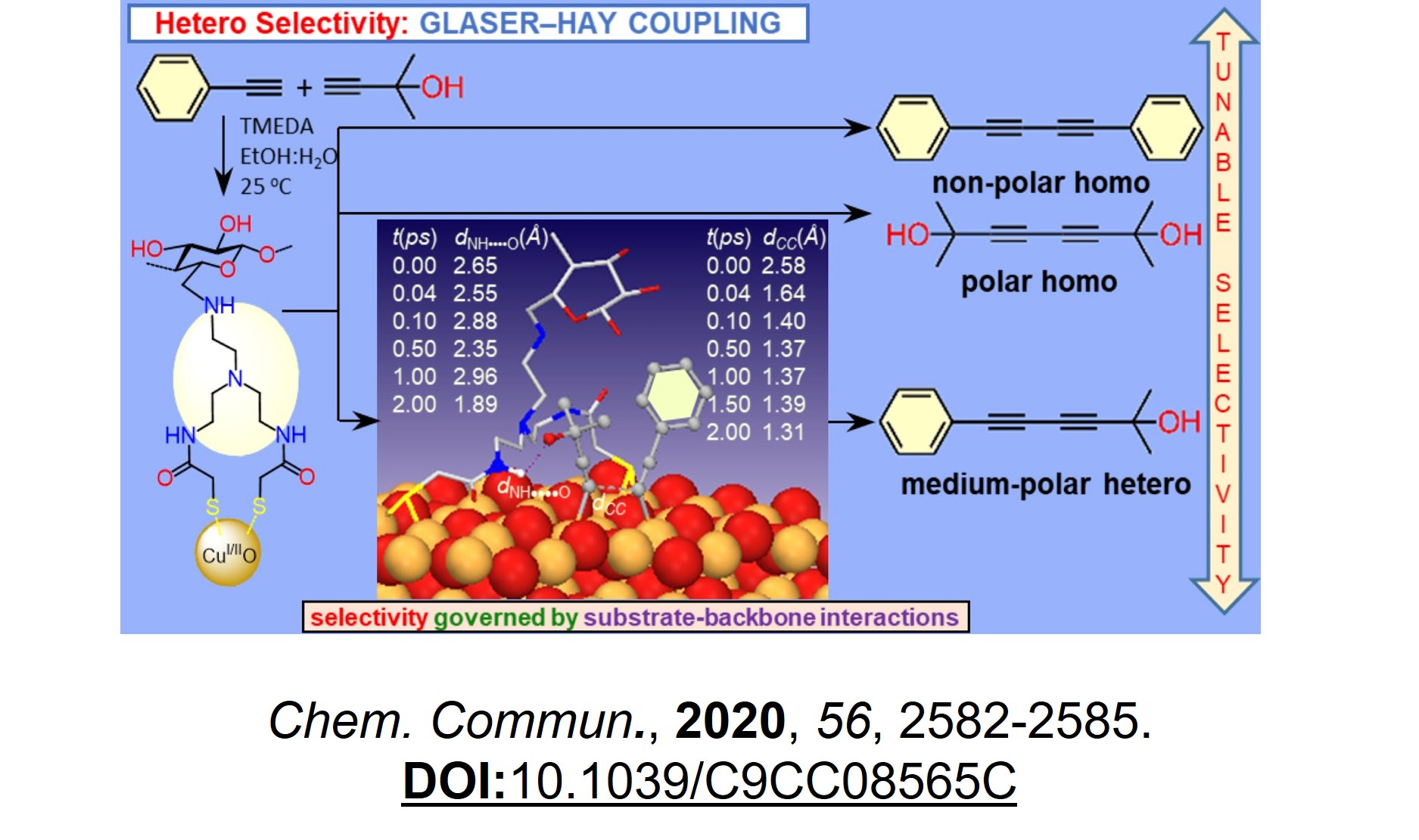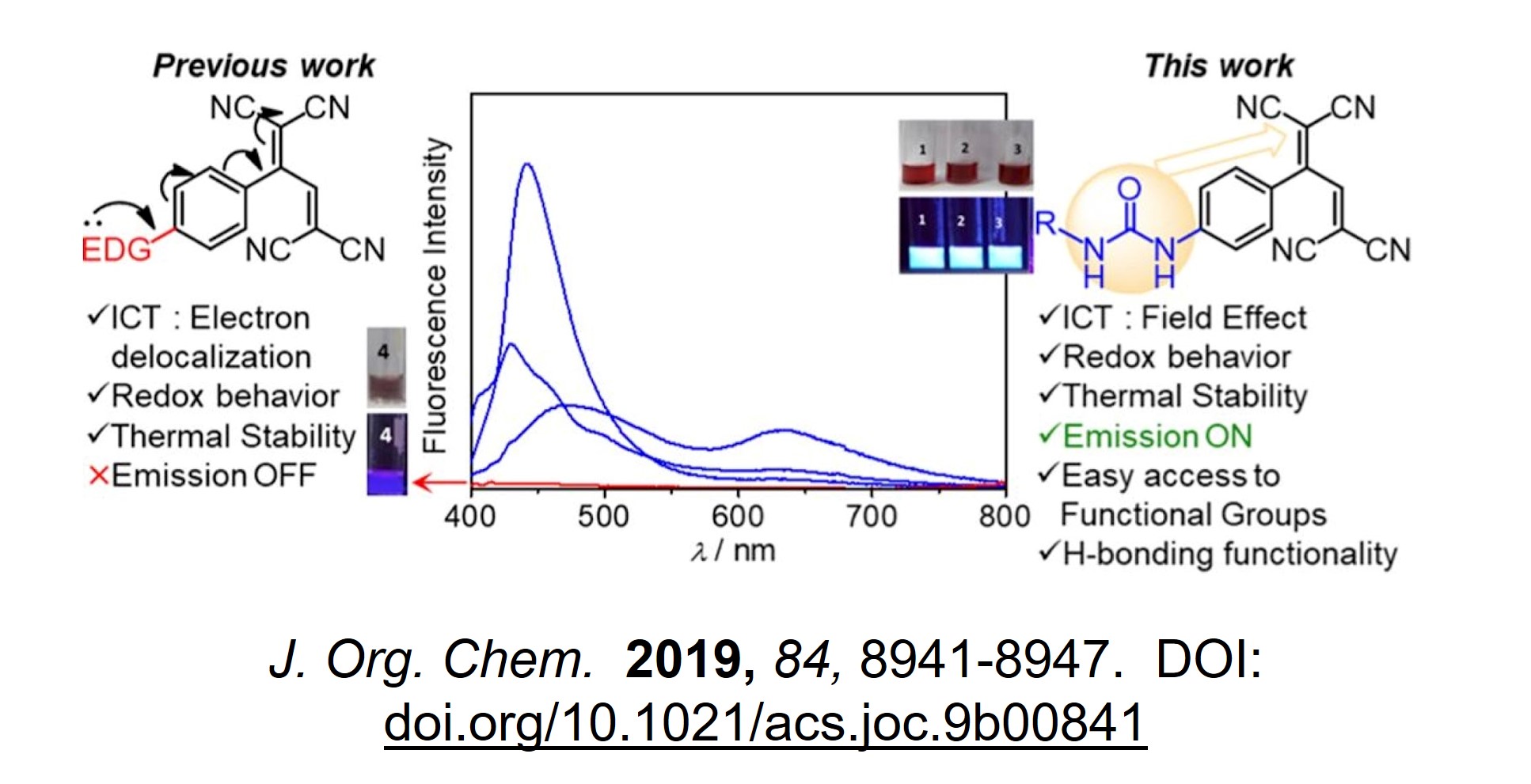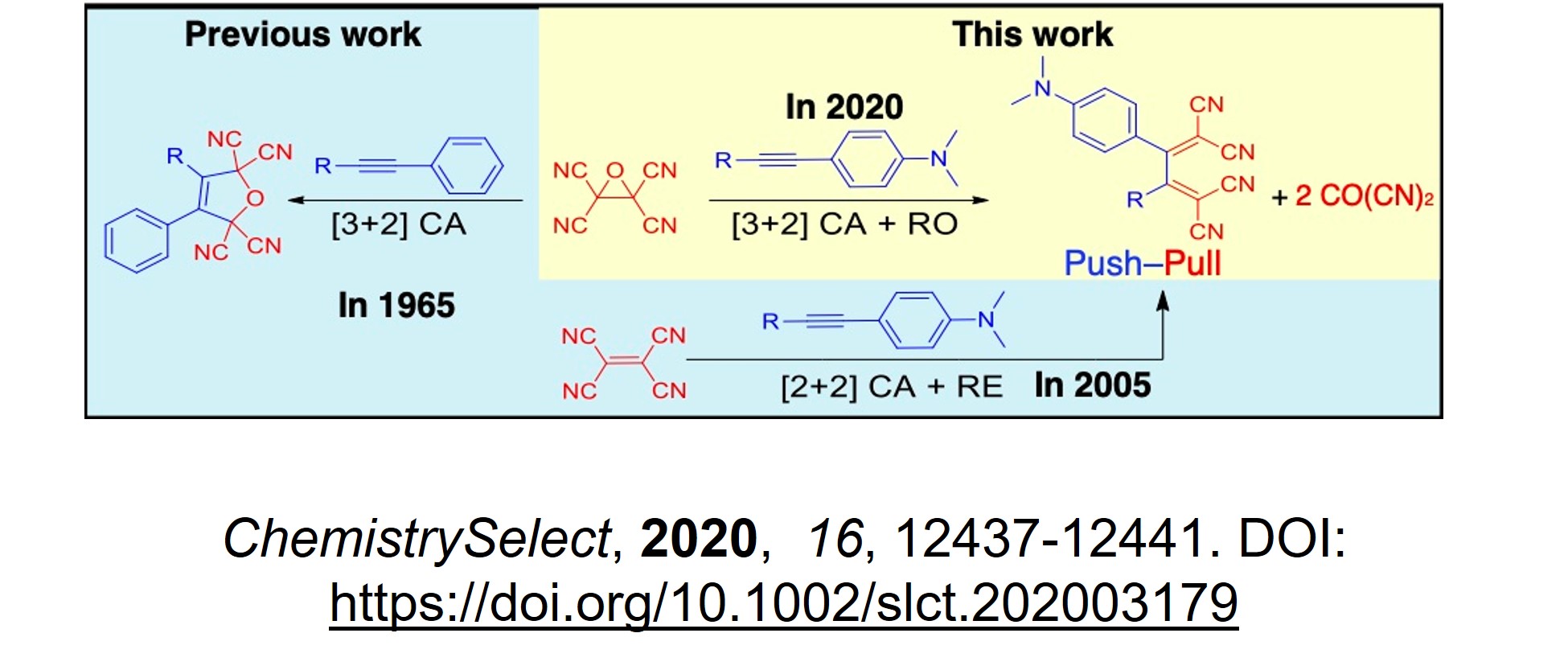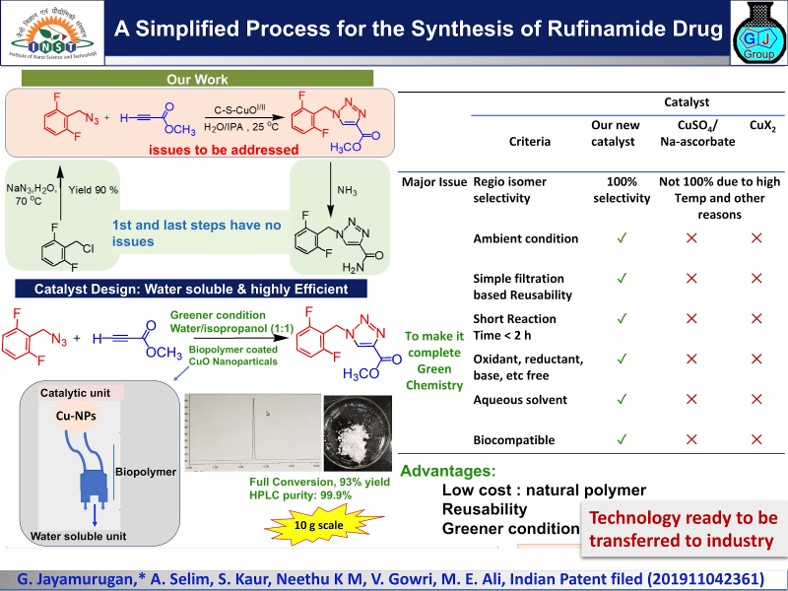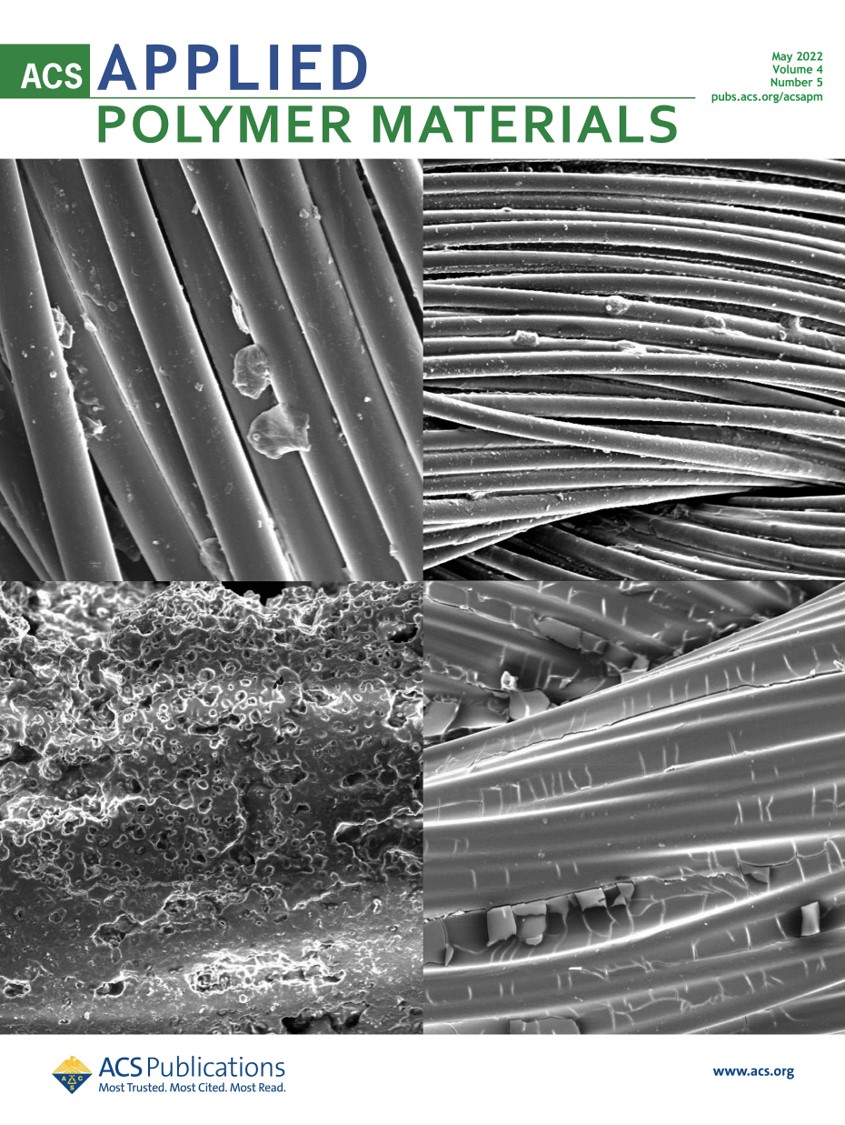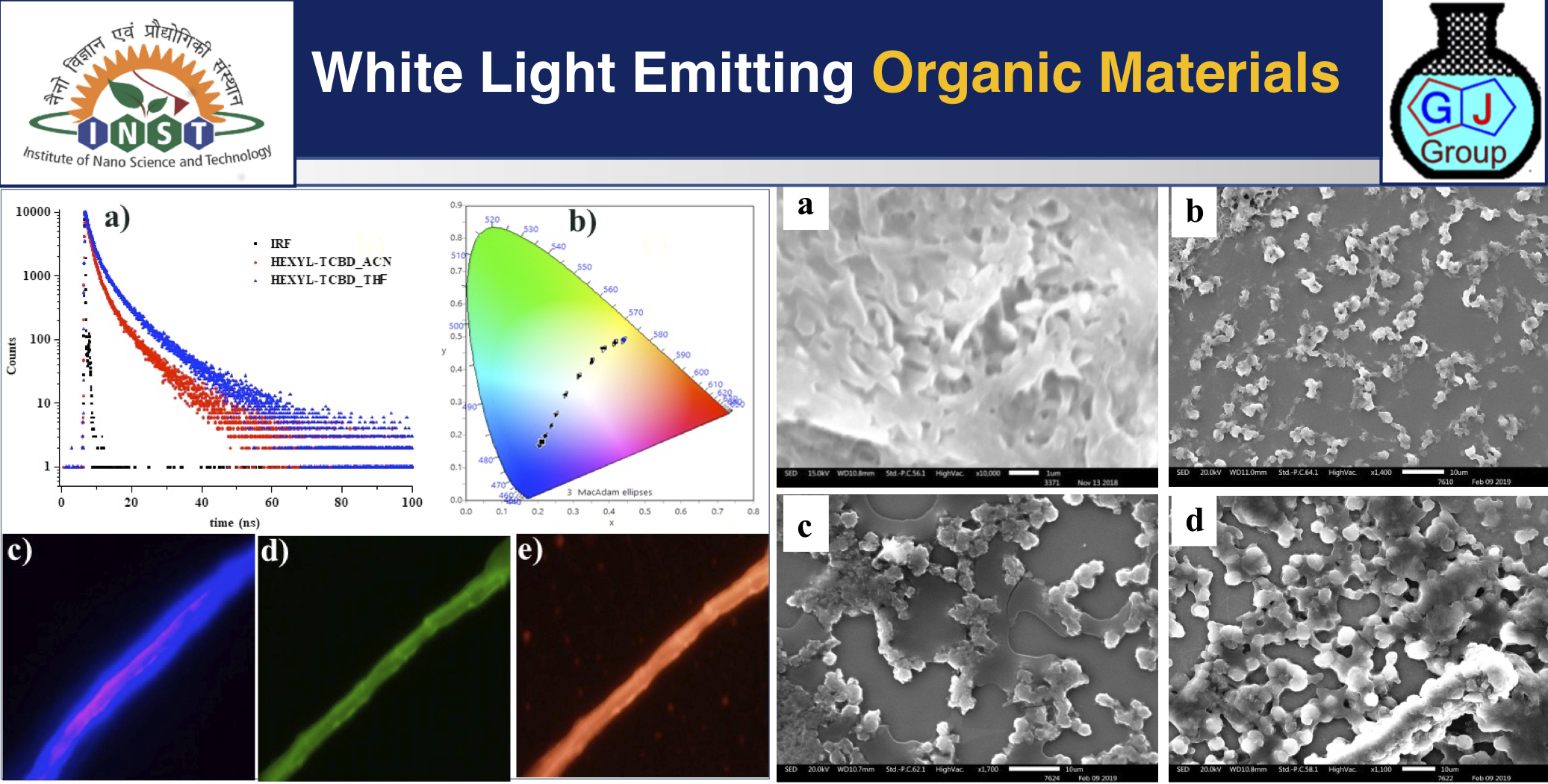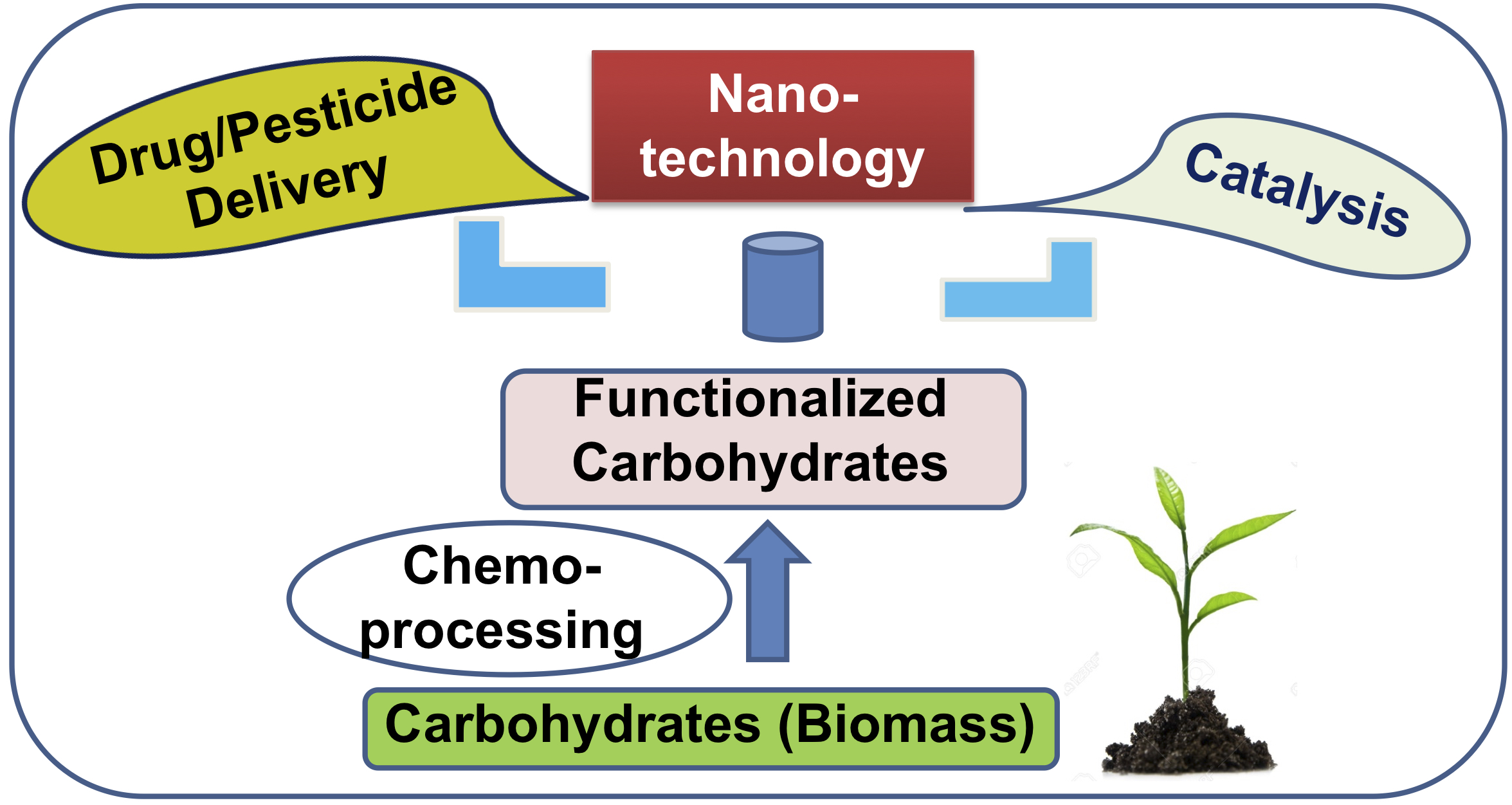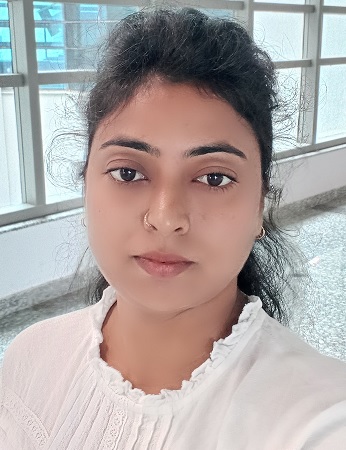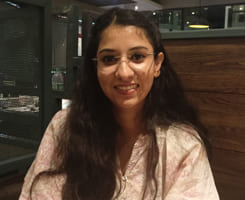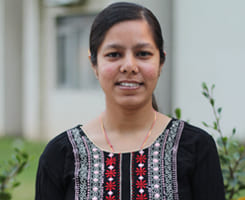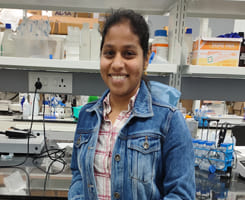Functional Organic (Nano) Materials (FOM) Lab
At the Institute of Nano Science and Technology (INST), Mohali, our scientific research focuses on the investigation and understanding of the basics of Science (Nano). The lessons learned from this exploration are being applied to technology development to positively impact health and well-being around the world.
In the short span of 7 years, in addition to being able to publish papers in internationally reputed journals, we have developed 5 technologies, out of which two technologies have shown promising for technology transfer to industries (shown interests and under discussion) and one start-up company being registered.
The research area of Dr Jayamurugan and his group focuses on three areas related to Energy, Environment and Health using functional organic nanomaterials.
Motivation: Today, the biggest problem faced by the earth is global warming due to the use of non-sustainable energy sources. This leads to pollution in various forms, however, pollution related to fuels and coal (automobiles and industries) can be conquered by the use of electricity generated through sustainable energy sources (Solar and other sustainable processes). However, in contrast, these technologies cannot solve pollution arising from organic industrial effluents such as pharmaceuticals, dyes, pesticides, etc. That is why it is imperative to find alternative solutions. Upon request from a pharmaceutical company, we have developed a process that can achieve complete recovery of soluble para amino phenol from the mother liquor which has significant economical values (patent filing under process). Several features make this affordable process self-sustainable, zero-waste, and environmentally friendly. A solution to this problem would not only save the environment but also all living systems on the planet.
Nanocatalysis: To substantiate further this objective, we also developed a sonocatalyst which degrades dyes in an aqueous solution at room temperature without using any light. This was achieved by realizing the synergistic effect of biomass-derived carbon dots polymer-supported Pd nanoparticles in dark (ACS Omega 2020, 5, 22603).
In addition, we contribute to the sustainable energy crisis by expanding the use of natural biodegradable polymers such as cellulose and starch. Due to their abundant availability on earth, they have drawn increasing attention as an alternative indirect energy source to crude oil. To do so, two different approaches have been used - the chemo-processing method and the degradation route. Our objective is to combine both methods depending on the nature of the problems. The chemo-processing method utilizes the inherent energy of biomass for the synthesis of metal oxide nanoparticle-based nanocomposites using suitable organic functionalization and metal salts. Thus, using the chemo-processing approach, abundant cellulose with thiol modification was used to generate highly reactive copper-oxide (CuI/IIO) NPs-based low-cost catalyst effective for azide-alkyne cycloaddition (CuAAC) (Asian J. Org. Chem. 2021, 10, 3428) and Glaser and cross Glaser-coupling processes using the chemo-processing approach (Chem. Commun. 2020, 56, 2582). The newly designed catalyst has been observed to ensure its usage in the industrial environmental-friendly synthesis of rufinamide drug intermediate (a drug for the treatment of epilepsy).
Whereas, the biomass degradation pathways have been successfully explored using carbon dots (CDs) derived from biomass (citric acid) and were used as a solid Brønsted acid catalyst, i.e., p-toluenesulfonic acid as a simple, low-cost benchtop chemical precursor to convert glucose to 5-HMF. Further, the robustness of the Brønsted acid catalyst was demonstrated in another application, i.e., acid-catalyzed esterification of levulinic acid (LA) to alkyl levulinate as a fuel additive (ChemistrySelect, 2022, 7, e202104448) under greener conditions. By designing the dual (Lewis and Bronsted acid) functionality subtle change in solvent system selective furfural formation was achieved from biomass-derived glucose (Biomass Conver. Biorefin. 2022, DOI: 10.1007/s13399-022-03182-w). Currently, we are exploring other biomass sources to utilize them as nanocomposite as sustainable catalysts (to be communicated).
Research Area II: Push-pull chromophores-based FOM for Diverse Applications: Strong push-pull chromophores (TCBDs) obtained by [2+2] cycloaddition-retroelectrocyclization reactions are generally non-luminescent and limit their applications in bio-imaging and sensing area. The development of luminescent 1,1,4,4-tetracyanobuta-1,3-diens (TCBDs) is an active research area, with a quantum yield (F) of 7.8% achieved so far in cyclohexane by appending fluorophore. Whereas, we have initiated this field by turning non-emissive chromophores into emissive just by using urea with unique electron-donating ability as a donor, (J. Org. Chem. 2019, 84, 8941) and nanotechnology-based approaches (Biomacromolecules 2023, 24, 5438). Our novel method radically reforms a weakly emissive 2,3-disubstituted TCBD (phenyl-TCBD 1) (FF = 2.3% in CH3CN) into a water-soluble, biocompatible nanoformulation as highly emissive aggregates 1NPsÌPF-127 with FF = 7.9% in H2O that too without fluorophore conjugation. The developed urea functionalized TCBD with a subtle change in substituent has enabled us to demonstrate the fluoride (J. Photochem. Photobiol. A, 2021, 410, 113613) detection in water. To date, few fluoride sensors provide both colorimetric and fluorometric detection (Indian Patent No. 202011028595). Our solution to this problem would significantly contribute to the human population around the globe, especially in remote areas affected by fluorosis diseases. Our research further aims to change the molecular property to obtain WLE (white light-emission) using supramolecular chemistry and nanotechnology (Langmuir 2022, 38, 430).
Organic solvents limit [2+2] CA–RE reaction in biological fields. We examined the formation of TCBDs through CA–RE reactions and their unusual reactivity to produce N-heterocyclic compounds when surfactant nature and concentrations were varied in the aqueous phase (Org. Biomol. Chem. 2023, 21, 2922) DOI: 10.1039/D3OB00053B). Unlike organic solvent-mediated CA–RE reactions, the present nanoreactor-mediated approach enabled the selective production of TCBDs as well as cardiotonic drugs resembling new heterocycles using H2O as a green solvent. Thus opening a window for exploring potential new drug molecules. Besides the widely explored organic electronics/materials, we believe that this study would help overcome the long-standing limitation of CA–RE reaction applicability in biological fields. One such example we showed recently was that to counter the harmful effects of excess nitric oxide (NO) through its inactivation, we developed urea-functionalized push-pull chromophores having TCBD/TCNQ as acceptor moieties. The inhibition of neovascularization in a corneal injury model suggested that Urea-TCNQ was effective in preventing pathological conditions (in collaboration with biology expert Prof. Deepa Ghosh, INST; Chem. Eur. J. 2023, 29, e202301748 DOI: 10.1002/chem.202301748).
Our research on optoelectronic materials not only opened up a new research area, i.e., luminescent TCBDs-based push-pull chromophores and CA-RE reactions in water for the biological field, but they also resulted in a first test-strip kit for naked eye quantification of fluoride ion in water. Currently, there is no test-strip kit available for this to avoid fluorosis.
Research Area III: Polymeric Nanoformulation for Health and agricultural applications: WHO estimates that cancer is the second leading cause of death in the world and that it killed 9.6 million people in 2018 alone. So addressing/improving chemotherapy using nanotechnology is a sizeable achievement. The design and synthesis of tailor-made polymeric and hybrid nanomaterials were studied in vitro for their effects on anti-cancer drug uptake and release (LCS-1 and niclosamide) induced by magnetic hyperthermia. (ACS Biomater. Sci. Eng. 2022, 8, 2636; ACS Biomater. Sci. Eng. 2022, 8, 2088; ACS Biomater. Sci. Eng. 2020, 5, 1102; Biomacromolecules 2018, 19, 803). In-vivo biological studies were conducted in collaboration with an in-house biology expert (Dr. Rehan Khan, INST). As part of another study, we demonstrated how to construct core-shell nanocarriers that contain denser hydrophobic cores through a combination of supramolecular and covalent interactions. These nanocarriers demonstrated enhanced drug uptake and sustained release capabilities (Langmuir 2022, 38, 8999) in comparison to their conventional micelle-based approach. Further, in health, a new type of polymeric biocide wherein 100% drug units were developed for antimicrobials coating of sutures (ACS Appl. Polym. Mater. 2022, 4, 3952) Highlighted in the Front cover of the Journal). Also, developed stimuli-responsive drug delivery systems for cancer therapeutic applications ( Photochem. Photobiol. 2024; Just accepted).
Nanotechnology-mediated pesticide delivery using natural polymers is being actively explored to overcome conventional pesticide release limitations. Our study is motivated by the lack of current information on what are the benefits and disadvantages of using hybrid nanoparticles (NP) and which polysaccharides are suitable concerning pesticide loading efficiency (PLE wt%), entrapment efficiency, and sustained pesticide release (SPR %). We systematically designed, synthesized, and characterized the hybrid- and organic-NCs with various polysaccharides to discern the role of inorganic support used in the hybrid-NCs, the type of nanomaterials synthesis such as hybrid versus organic systems and to understand the beneficial effect of functionalization of natural polysaccharide (cellulose) to uncover answers to these questions (Nanotechnology 2021, 32, 475704)
Technologies developed and available for transfer are,
1. Small organic molecule fluorescent probe for detecting hypo- and hyper-cholesterolemia: Developed a non-enzymatic/metal-free small fluorescence probe for total cholesterol detection blood serum samples in collaboration with doctors from PGI, Chandigarh. (Indian Patent No. 202311086509).
2. First test-strip kit for naked-eye quantification of fluoride ion in water: We successfully demonstrated a new class of push-pull chromophores which can selectively sense fluorine anion in drinking water by naked-eye paper-based colorimetric detection without the need for any equipment (Indian Patent No. 202011028595). India Science TV Channel has reported a news coverage (documentary) on our technology related to equipment-free, instant paper-strip based Fluoride detection in water (news coverage: https://www.indiascience.in/videos/anusandhanika-episode-6-h). A startup company is being registered.
3. Tiny contribution towards low-cost drugs: The developed polymer-supported copper oxide nanoparticles catalyst and its applications in C-C and C-N bond-forming reactions have been successfully demonstrated with its use in Rufinamide drug industrial synthesis to bring down the cost. The rufinamide drug is an anti-convulsant and required to take the daily course for a lifetime, which puts the patient in to highly bothersome. (Indian Patent no. 201911042361). Also, future studies are directed towards other triazole drug molecules (Asian J. Org. Chem. 2021). (news coverage: https://dst.gov.in/inst-develops-nanotechnology-based-low-cost-method-production-antiepileptic-drug-rufinamide), Currently, a Bangalore based company is testing our catalyst for their industrial use to perform click reactions.
4. Solution for industry Effluent contamination: This technology was developed upon request from a Gujarat-based pharmaceutical company. One of the major contributors to environmental pollution is the pharmaceutical and chemical industries' effluent contamination in environmental water bodies. Developed a simple solution for recovering the slats and unreacted chemicals in a self-sustainable fashion. Though the invented technology is optimized for paracetamol industries, future development of optimization for specific industries can be fine-tuned to reach the vast number of other organic industries, to achieve zero waste sustainable process with revenue generating and environmental safety (patent filing under process).
5. Antimicrobial coating for Sutures: New type of polymeric biocide (100% drug units and having no spacer) was developed for antimicrobials coating of sutures (ACS Appl. Polym. Mater. 2022 Highlighted in the Front cover of the Journal; Photochem. Photobiol. 2024; Just accepted). Currently, we are in talks with an Israel-based company for developing an antimicrobial coating for surgical devices.
Chemical Industries convert raw materials into useful products that we use in daily life. This has brought a tremendous change in how the world operates. It is of utmost important for everyone to understand the importance of the chemical industries which have touched all our facets of life like Agriculture, Health, Environment, Food, Hygiene, Transportation, Decor, etc. Unfortunately, this also brings harmful effects such as pollution due to industrial waste contamination. As a chemist, while creating new advanced nanomaterials for making mankind and betterment of other living systems, We strongly believe that through our research even this negative effect can be tackled.
The companies interested may contact Dr. Jayamurugan (jayamurugan@inst.ac.in)
Media coverage:
Fluoride detection:
· News coverage on equipment-free, instant paper-strip-based fluoride detection. Various news media covered including India Science TV Channel Report on our technology related to Fluoride ion Sensing in water and telecasted the programme on August 15 2020 (URL: https://youtu.be/ljIcboFa34I)
https://dst.gov.in/equipment-free-simple-paper-strip-based-naked-eye-fluoride-ion-detection-and-quantification-kit
Rufinamide drug production:
· News coverage on Anti-epileptic drug " Rufinamide" synthesis
https://dst.gov.in/inst-develops-nanotechnology-based-low-cost-method-production-antiepileptic-drug-rufinamide
Biomass-based sun-screen (SS) lotion: News coverage: https://www.tribuneindia.com/news/chandigarh/tricity-businesswomen-shine-at-startup-summit-455120
